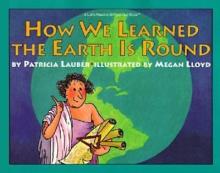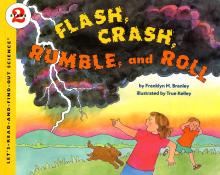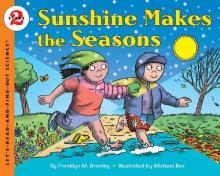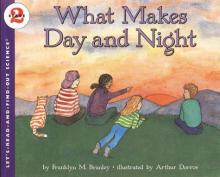Earth Science
How We Learned the Earth is Round
A history and science picture book that covers the development of man's understanding of the shape of the earth focusing on the discoveries of the Greeks and on the voyages of Christopher Columbus and Magellan. Currently out-of-print.
Flash, Crash, Rumble and Roll
This simple, nicely illustrated (cartoon-like pictures) children's book explains important concepts of science in a very easy-to-understand fashion. The reader is introduced to the way thunderclouds form and where thunder and lightning come from. The scientific content is substantial and very accessible. The story line is rounded out with tips for staying safe during a storm. My children have been fascinated by the details about the inside of a thundercloud, how fast sound and light travel, how you can measure the distance thunder travels and more. This title has been a big favorite with all of my children for a number of years and, rather than being made nervous by the dangers mentioned in the book, a little knowledge seems to be a comforting thing.
Sunshine Makes the Seasons
"Sunshine warms the earth. If the sun stopped shining, the earth would get colder and colder..." It is important for children to consider the importance of the sun in our lives. In Sunshine Makes the Seasons, children are introduced to the sun's role and in particular how the seasons change because of the earth's rotation around the sun and the tilt of the earth.
In a fashion similar to The Moon Seems to Change, an experiment involving an orange stuck into a pencil (again a styrofoam ball and a chopstick or pencil will work just as well) helps to illustrate the various points that are explained. First the child uses a flashlight with the "axis" of the earth pointed straight up and down to show how the seasons would always be the same in that scenario. Then we are shown that by tilting the earth, the length of each day changes throughout the year. We also see how the North and South Pole are special cases where the midwinter can have several weeks of darkness and midsummer can have continuous light. We also see that the seasons change very little at the equator and that the Northern and Southern hemispheres have opposite seasons from each other. Again, this book covers substantial information in a very simple way and will be very useful and straightforward for early science lessons.
What Makes Day and Night?
The clearly written text is combined with simple, colorful pictures to make the concepts of day and night and the rotation of the earth in relation to the sun very understandable for both young children and their parents. : ) Included is a very simple hands-on "experiment" requiring only your child and a desk lamp. Some information about the moon is also covered. Like other books in this series, this book is a great solution for satisfying some of those "why" questions that young children constantly ask.




